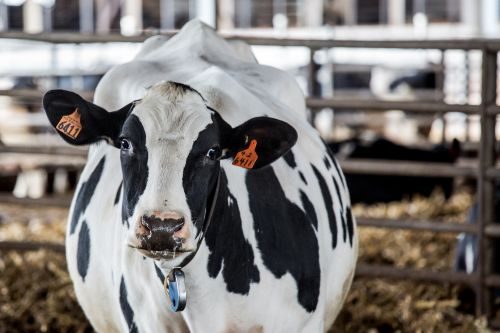Feed an Amino Acid Balanced Diet for Transition Cow Performance
Posted: January 4, 2016 | Written By: Thomas Schoenfeld

In today’s dairy farming operations we are all affected by the global milk markets. As nutrition suppliers we are always asked to “get more milk” or “do it cheaper with same the result.” Sounds simple, right? Not always.
One way to help improve any milk production issue or income over feed cost is by feeding an amino acid balanced diet, suppling enough metabolizable protein for production and the use of Omega fatty acids to help support reproduction. What is metabolizable protein? It is the total sum of amino acids absorbed from the intestines and available to the cow. These amino acids are derived from two sources. 1) The rumen microbes that grew in and then passed out of the rumen and 2) the digestible feed protein that was not degraded during rumen fermentation.
It all has to start with the transition phase. It is stated that 30-40% of cows have a clinical health problem around calving. This has correlation to the reduction in feed intake prior to calving. Research has stated that a close-up dry cow requires a minimum of 1,000 grams of metabolizable protein, which is needed for support of the calf and herself. Without a good transition from dry cow to milking cow she has now become a costly cow from either treatment cost, labor costs, milk loss and lower reproduction efficiency. With the drop in feed intake prior to calving, her amino acid intake also drops. Part of that is due to the fact that fewer rumen microbes are grown on higher fiber diets. In turn, the supply of amino acids are important to the fresh cow because up to 30% of them are used to make glucose. It is known that amino acid enriching the dry cow diet is important due to the knowledge of methionine is needed to stimulate the secretion of VLDL’s which transport the triglycerides way from the liver avoiding fatty liver syndrome and ketosis.
It is shown that one lb. of increased peak milk production is worth 200 lbs. more of overall milk in the lactation. People get concerned with breeding when we talk more milk because historically the higher the producer, the harder to settle. Research has shown that feeding Omega fatty acids has improved this in the dairy herd. Mainly Omega 3’s during the lactation has hormonally helped maintain the corpus luteum, which supports embryo survival and implantation on the uterine wall in turn has a reduction in early embryonic loss.
Why is this all important to discuss on your farm? Although there might be other bottlenecks that need to be covered, the reasons to look at amino acids and Omega fatty acids are undeniable.
1) Transition cow performance (reduction in metabolic issues).
2) Lactation diet (higher peak milk due to less metabolic issues, feed efficiency improved due to proper balancing and reduction in waste protein. More pregnancies, which equal more calves and another fresh cow cycle which is ALWAYS the time period which she produces the most milk.)
3) More fresh cows equals your next opportunity to increase income over feed cost.
Talk to your Form-A-Feed representative about feeding a balanced amino acid diet, and how they can help you reach your goals.